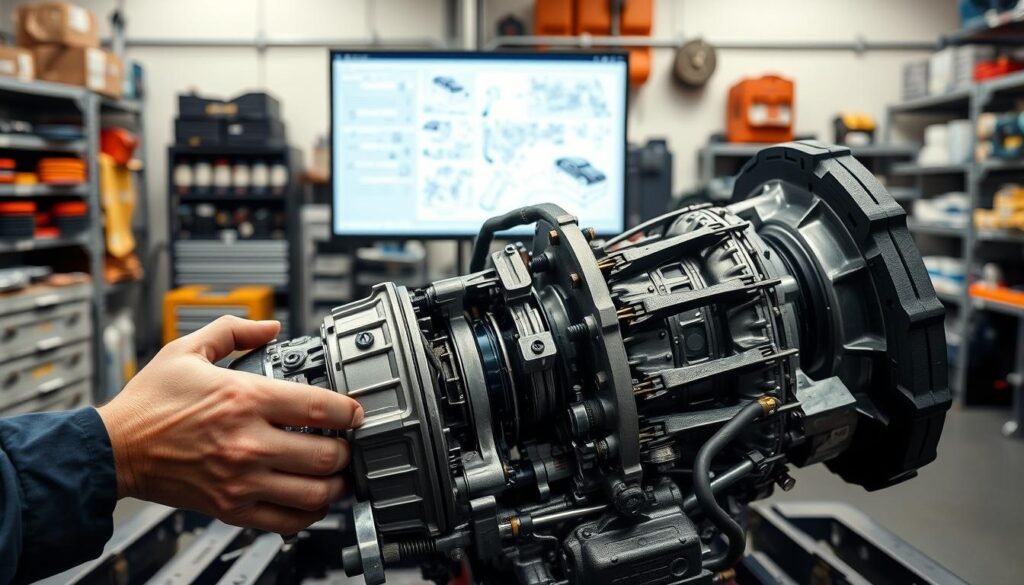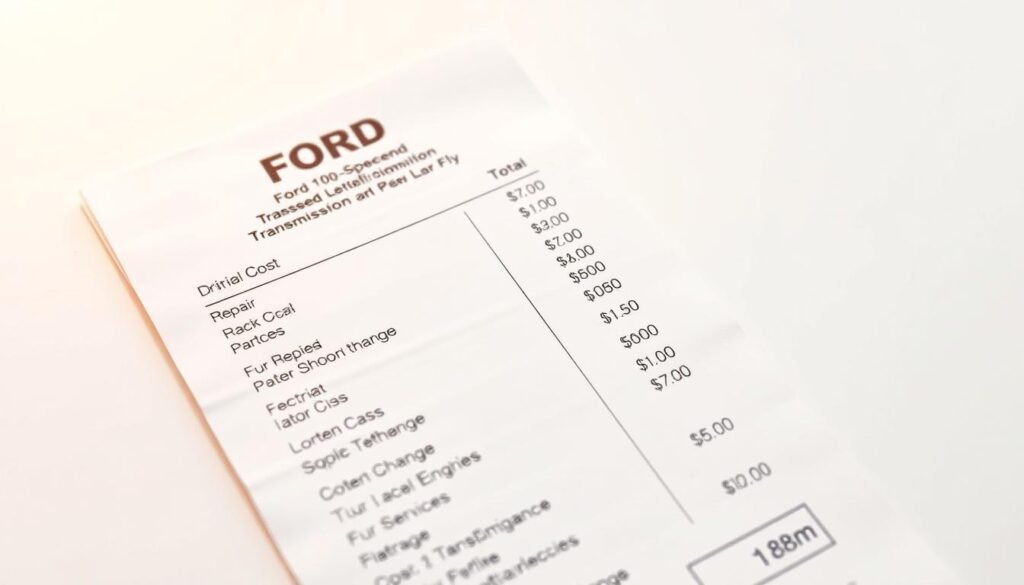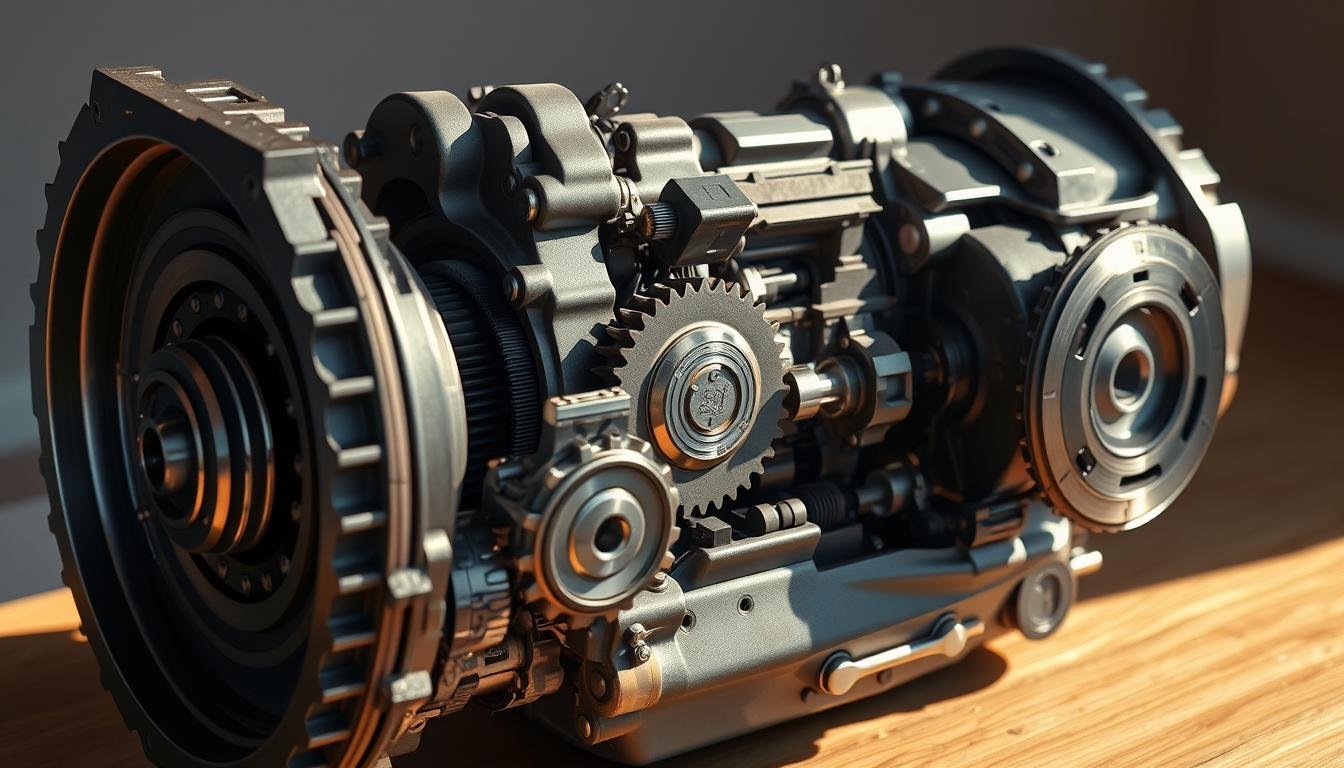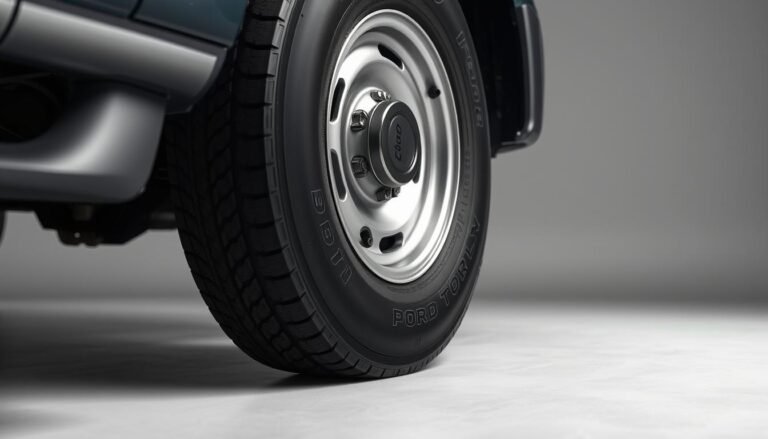Ford 10-Speed Transmission Problems Issues & Fixes
Ford 10-speed transmission problems can really affect your drive, like the 10R80 model. If you see odd shifts, slow engagement, or sudden drops, you’re not alone.
Many Ford owners face these issues too. This article will cover common problems and reliable fixes for these challenges.
We’ll share insights on the Ford 10-speed transmission’s history. We’ll also talk about how to diagnose and fix issues. You can choose to fix it yourself or get professional help.
Plus, we’ll discuss recall info and what to do if you have transmission problems. Knowing and fixing these issues starts here.
Our guide will help you make smart choices for your vehicle’s transmission. Let’s explore the Ford 10-speed transmission’s complexities and find effective solutions together.
Introduction To Ford 10-Speed Transmissions
The Ford 10-speed transmission was introduced in 2017, thanks to a partnership with General Motors. It aims to boost vehicle efficiency and performance.
Yet, its complexity poses challenges that car owners need to grasp. This transmission is designed to improve your driving experience. It uses advanced technology.
Knowing how it works helps spot problems early. This makes fixing issues easier. Exploring this transmission reveals its impact on vehicle operation.
Learning about its basics offers insights into its history and common issues. This knowledge is key as we dive deeper.
The History of The Ford 10R80 Transmission
The Ford 10R80 transmission’s history shows Ford’s dedication to improving car performance. It was made to fix issues with the 6R80 model, like handling more power.
This transmission is designed for today’s cars, focusing on both speed and fuel efficiency. It has a new design for smoother shifts and better gas mileage.
This meets today’s car standards. But, early users faced reliability problems, raising questions about its road performance.
This led to talks about making the Ford 10-speed automatic transmission better. It showed the need for ongoing improvements in making and design.
The story of the Ford 10R80 transmission highlights Ford’s push for the latest technology. It meets today’s driver needs.
Knowing this history helps us understand its making and how it compares to older models.
Common Issues with Ford 10-Speed Transmission
Ford 10-speed transmissions have faced several common problems. These issues can affect your driving comfort and safety.
Knowing about these problems helps you spot symptoms early and fix them quickly. Here, we explore three major issues with the Ford 10-speed transmission.
Erratic Shifting and Gear Slips
Erratic shifting is a big problem while driving. It means the gears change in an unpredictable way. This can make your ride uncomfortable and even unsafe.
Look out for these signs:
- Sudden changes in acceleration or deceleration
- Unusual engine sounds during shifting
- Inconsistent power delivery
These signs mean you should check your transmission right away. Ford 10-speed transmission erratic shifting can be caused by software bugs or mechanical problems. It’s important to find and fix the issue.
Delayed Engagement Problems
Delayed engagement happens when shifting into drive or reverse takes too long. This can make it hard to accelerate smoothly, which is a big problem in traffic.
Watch for these signs:
- Hesitation when stepping on the gas pedal
- Feeling of the vehicle dragging before it shifts
- Unresponsiveness after moving the gear selector
Spotting delayed engagement problems early can prevent more damage. It also helps keep your car running better. Fixing these issues quickly can save you time and money.
Sudden Downshifts
Sudden downshifts can surprise you, as the car shifts into a lower gear without warning. This can cause a jolt and affect your control over the car.
Look out for these signs:
- Uncommanded downshifting moments
- Excessive engine RPMs during normal driving conditions
- Difficulty controlling speed while driving
These sudden downshifts are common problems with Ford 10-speed transmissions. They need your attention right away.
Knowing why they happen can help prevent accidents and make your drive better.
Diagnosing Ford 10-Speed Transmission Problems
Spotting the signs of transmission failure is key to keeping your car safe and running well. Knowing when your transmission might be failing can help you fix it before it gets worse.
This part talks about the important signs of trouble with Ford’s 10-speed transmission. It also shows how to use diagnostic tools to find and fix these problems.
Signs Your Transmission is Failing
Spotting ford 10-speed transmission problems early is important. Look out for these signs:
- Unusual noises like grinding or clunking when shifting gears
- Slipping gears that seem to disengage temporarily
- Fluid leaks under the vehicle, looking reddish or brown
- Warning lights on the dashboard that show transmission trouble
- Difficulty shifting, feeling rough or hesitant
Using Diagnostic Tools To Identify Issues
Diagnostic tools for ford transmission help you understand your car’s health. OBD II scanners are key in finding trouble codes related to transmission issues.
Here’s how to use them well:
- Plug the OBD II scanner into your car’s diagnostic port.
- Turn on the ignition without starting the engine.
- Run the scanner to get any stored trouble codes.
- Look up the codes in the manual, focusing on transmission-related ones.
- Write down any repairs or tests needed.

Using these methods helps catch problems early and fix them better. Being prepared with this knowledge helps keep your Ford’s transmission in top shape.
What is The Components of The 10R80 Transmission?
To fix problems with the Ford 10R80 transmission, you must know its key parts. Each part, like the torque converter and valve body, can cause issues.
Knowing how these parts work together helps you find and fix problems.
Torque Converter Issues
The torque converter is vital for the Ford 10R80 transmission. It helps power move from the engine to the transmission.
But, it can have reliability problems. Issues like not locking up properly can cause overheating and lower efficiency.
Checking the torque converter regularly can spot problems early. This allows for quick fixes.
Valve Body Problems
The valve body controls fluid flow in the transmission, affecting gear shifts. Problems with the valve body, like leaks or solenoid failures, can cause shifting issues.
It’s important to keep an eye on the valve body’s condition.
Oil Pump Reliability
The oil pump keeps the transmission system’s fluid pressure right. If it fails, it can make existing problems worse.
A malfunctioning oil pump can lead to many operational failures. Knowing if the oil pump is working right is key for any transmission owner.
How To Fix Ford 10-Speed Transmission Problems?
Fixing Ford 10-speed transmission issues needs a careful plan. You must weigh repairs against upgrades. Knowing your options is key to keeping your car running well.
By looking into the best ways to fix Ford transmission problems, you can find the right steps. This will help get your vehicle back in top shape.
Common Repairs and Upgrades
Common fixes for Ford 10-speed transmissions include:
- Software updates to boost transmission performance
- Solenoid replacement for better shifting
- Valve body tweaks to fix pressure problems
These fixes can greatly lessen transmission troubles if done right. Upgrades might include aftermarket parts to boost reliability and performance.
DIY Fixes vs Professional Help
DIY fixes can save money on labor. For example, a software update can be done at home if you know basic car tech.
Simple solenoid swaps are also doable for those with mechanical skills. But, not every problem can be fixed by yourself. More complex issues need a pro.
Think about your skills and the risks of each choice. It’s important to fix the problem right for long-term reliability.

Ford 10-Speed Transmission Recall Information
Ford has issued several recalls for the 10-speed transmission over the years. These recalls aim to fix software issues that can cause unexpected shifts or downgrades.
It’s vital to stay informed about the ford 10-speed transmission recall for your safety and the safety of others.
Notable Recalls and Their Impact
Some key recalls for the ford 10-speed transmission include:
- Software malfunctions that could cause erratic shifting.
- Potential risks of loss of propulsion while driving.
- Delays in gear engagement that may lead to accidents.
These problems show why it’s important to regularly check for recalls on ford transmissions.
How To Check For Recalls on Your Vehicle?
Checking for recalls on your vehicle is easy and can be done in a few ways:
- Visit the official Ford website and navigate to the recalls section.
- Enter your vehicle identification number (VIN) to find specific recall information.
- Contact your local Ford dealer and ask about any outstanding recalls for your vehicle.
Keeping up to date ensures your vehicle stays safe and meets manufacturer standards.
Learning The Ford 10-Speed Transmission Failure Rates
The Ford 10-speed transmission has seen higher-than-expected failure rates. This is due to several factors, like heavy towing or modifications beyond what the manufacturer suggests.
Driving conditions greatly affect the transmission’s performance. For instance, stop-and-go driving or extreme weather can wear it down faster.
Regular maintenance is key to keeping the transmission running smoothly. Skipping fluid changes or ignoring warning signs can lead to early failure.
Here’s a detailed overview of transmission reliability statistics to provide a clearer picture of the situation:
| Condition | Failure Rate (%) | Average Mileage Before Failure (miles) |
|---|---|---|
| Normal Use | 8 | 120,000 |
| Heavy Towing | 15 | 80,000 |
| Modified Vehicles | 20 | 60,000 |
| Regular Maintenance | 5 | 150,000 |
This data shows why it’s vital to understand what affects the ford 10-speed transmission failure rates.
It also stresses the importance of regular maintenance for long-term reliability.
Ford 10-Speed Transmission Warranty Information
Knowing about the warranty for your Ford 10-speed transmission is key. Many Ford transmissions have a limited warranty.
This warranty covers defects in materials and workmanship. It means your transmission should work right under normal use.
Knowing the details of the warranty helps you deal with any problems. It’s important for keeping your investment safe.
What’s Covered Under Warranty?
The warranty for Ford transmissions usually includes:
- Defects in manufacturing and materials.
- Transmission repairs or replacements under certain conditions.
- Labor costs for covered repairs.
- Coverage for a set number of years or miles, whichever comes first.
It’s also important to know what’s not covered. Common things that aren’t included are:
- Problems from modifications or misuse.
- Damage from poor maintenance or neglect.
- Normal wear and tear, like on seals and gaskets.
To file a warranty claim, you need proof of the problem and regular maintenance. Keep records of all service on your vehicle.
This makes the claims process easier. Knowing these details helps protect you from transmission issues later on.
Cost of Ford 10-Speed Transmission Repairs
Knowing the cost of fixing a Ford 10-speed transmission is key for car owners. When your transmission has problems, it’s important to look at repair costs.
Whether you need a small fix or a full replacement, knowing the budget helps keep your car running well without spending too much.
Average Repair Costs Explained
The cost to fix a Ford 10-speed transmission changes based on the repair needed. Here are some common costs:
| Repair Type | Estimated Cost |
|---|---|
| Clutch Kit Replacement | $1,200 – $1,800 |
| Valve Body Replacement | $800 – $1,200 |
| Transmission Fluid Change | $150 – $300 |
| Rear Main Seal Replacement | $400 – $750 |
These prices are averages in the United States. Remember, local prices and your car’s condition can change the final cost.
Assessing Repair vs Replacement
At times, fixing the transmission might not save money. Think about these points when choosing between repair and replacement:
- Age of the vehicle: Older cars might need a new transmission.
- Overall condition: If your car needs many repairs, replacing might be better.
- Warranty status: Check if any warranties cover repair costs.
- Estimated lifespan: Compare the life of current repairs to a new transmission.
Comparing repair costs to replacement can help you make a smart choice for your car’s future.

Consumer Experiences and Complaints
Real-world experiences from other Ford owners give us key insights into common challenges with the 10-speed transmission.
Looking at ford 10-speed transmission consumer complaints helps us understand reliability and performance issues.
This section shares case studies and testimonials that show the difference between what people expect and what they get.
Case Studies of Common Complaints
Many Ford 10-speed transmission owners have shared specific problems. Some common issues include:
- Erratic gear shifting that affects overall driving experience.
- Delayed response when engaging the transmission, leading to frustrating moments.
- Unexplained downshifts that catch drivers off guard, raising safety concerns.
These case studies show how often reviews of transmission issues come up. They serve as warnings for those thinking of buying a Ford with this transmission.
User Reviews and Testimonials
Consumer reviews of the Ford 10-speed transmission show mixed feelings. Some owners love its smooth performance, while others are unhappy with ongoing problems.
Here are some examples:
| User | Experience | Rating |
|---|---|---|
| Owner A | Reported frequent slipping and delays in shifting. | 2/5 |
| Owner B | Enjoyed a seamless experience with no complaints. | 4/5 |
| Owner C | Faced sudden downshifts under normal acceleration. | 1/5 |
This table shows different experiences, highlighting shifts in satisfaction. It points out areas where Ford needs to improve.
Potential Legal Implications For Ford Transmission Issues
Many problems with the Ford 10-speed transmission have led to legal issues. Knowing about the legal side of these problems can help you.
If your car keeps having transmission issues, you might have rights under warranty and state laws.
Class Action Lawsuits Against Ford
Many Ford owners have started class action lawsuits because of transmission failures.
These lawsuits are for groups of people with similar problems. If your car is having big issues, check if there are lawsuits in your area.
Compromise Lemon Law Claims
The lemon law protects buyers of faulty cars. If your Ford’s transmission keeps failing and Ford can’t fix it, you might have a lemon law case.
Learning about the lemon law can help you figure out your next steps.

Conclusion
The Ford 10-speed transmission is a mix of new tech and some practical problems. This article has covered issues like erratic shifting and delayed engagement.
It also shared fixes you can do yourself to avoid expensive repairs. Knowing about these problems early can save you a lot of money.
Being proactive is key to enjoying your Ford to the fullest. By understanding common issues and solutions, you can fix them quickly.
Regular maintenance and being watchful are key to avoiding problems. This knowledge helps you handle any issues confidently.
So, you can keep your car running smoothly and enjoy it for many years.
FAQs
Q: What are common issues with the Ford 10-speed transmission?
A: Issues include erratic shifting and delayed engagement. You might also experience sudden downshifts and slipping gears. These problems can harm your vehicle’s performance and safety.
Q: How can I diagnose problems with my Ford 10-speed transmission?
A: Look for signs like unusual noises and slipping gears. Fluid leaks are also a sign. An OBD II scanner can find trouble codes that point to specific problems.
Q: What repairs are commonly needed for Ford 10-speed transmission issues?
A: Repairs often involve software updates and solenoid replacements. Valve body modifications are also common. Some fixes you can do yourself, but others need a pro.
Q: Has Ford issued any recalls for the 10-speed transmission?
A: Yes, Ford has recalled several models for 10-speed transmission issues. These include software glitches that can harm performance.
Q: What is the expected warranty coverage for my Ford 10-speed transmission?
A: Warranty usually covers defects in materials or workmanship. But, it might not cover misuse or modifications. Always check your warranty for details.
Q: How much can I expect to pay for repairs on the Ford 10-speed transmission?
A: Repair costs vary. Fixes like valve body replacements can cost between







